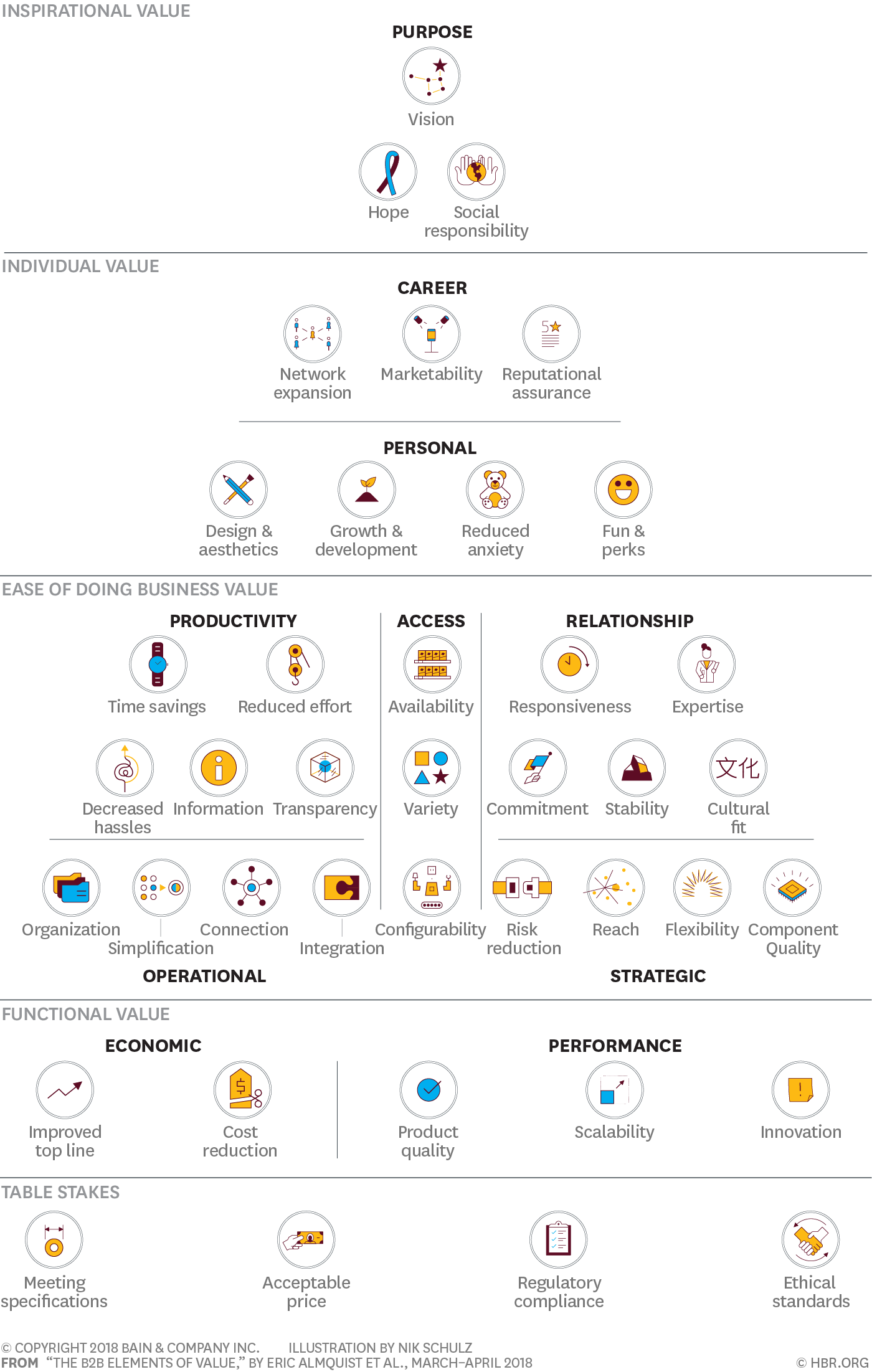
The 'elements of value' pyramid organize basic value offerings at the bottom and aspirational offerings at the top.
How do customers want to be served?
As a result of three decades of consumer research and observation for corporate clients, the authors - all at Bain & Company - identified the "elements of value." B2C and B2B customers' purchasing decisions are guided by Bain's Elements of Value.
Insights explore how companies can move beyond price to offer more value.
Every product has its own value, which is determined by the individual.
There are, however, universal building blocks of value.
Leaders must compare their value offerings with their competitors, close value gaps, and come up with innovative and creative value combinations.
"... When customers evaluate a product or service, they weigh its perceived value against the asking price..."
A hierarchical pyramid, inspired by Maslow's Hierarchy of Needs, organizes these elements (30 for B2C and 40 for B2B) into basic and aspirational value offerings.
In this pyramid, the elements are arranged according to four types of needs: functional, emotional, life-changing, and social impact.
These elements, according to the authors, can result in stronger customer loyalty, increased consumer willingness to try a particular brand, and sustained revenue growth.
B2B Elements of Value
What do your B2B customers value?
B2B pyramids integrate aspects of negotiation, functionalities, classifications of value to businesses, careers, and people, and purposeful dating.
 |
| Picture: Harvard Business Review |
B2C Elements of Value
There are some great products that serve a very specific purpose.
There are other products that hit on several elements, and this mix is what creates differentiation and loyalty.
 |
| Picture: Harvard Business Review |
By understanding what your customers really value, you can differentiate your offering, grow, gain share, and the price at a premium.
With Elements of Value, you can identify what matters most and deliver it efficiently.
The authors use real-world examples to illustrate how companies have used the elements to grow revenue, refine product design, identify customers' strengths and weaknesses, and cross-sell products.
You can use the elements of value frameworks in a jobs-to-be-done analysis to think broadly about what matters most to your customers.
Inspirations:
I am incredibly grateful that you have taken the time to read this post.
Your support and engagement mean the world to me, and I truly appreciate your interest in the topics I write about.
I hope that you have found this post informative, educational and engaging.
If you are interested in reading more of my work, please visit other articles here on the website.
I promise to continue providing valuable and high-quality content for your enjoyment and education.
Thank you again for reading and I hope to see you soon!
Here are some related articles you may enjoy:
There are even more good things I've prepared for you!
Subscribe below or click here to receive new posts in your Email!
Do you want to read some book notes and recommendations? Discover more here!
Do you want to have amazing weekly content curation? Discover more here!
Ready to make a positive impact?
Support my work by sharing my content with your network.
Your simple act of kindness can reach new heights and help spread valuable information.
Want to show your support in a tangible way? A virtual coffee is a small but mighty way to show your appreciation and give me the extra energy to keep crafting valuable content!



